Green Spring Clean: Greener Homes
As the UK announces the world’s most ambitious target for cutting carbon and enshrines it in law, we’re looking at how to improve the green credentials of one of the country’s largest carbon contributors: the homes we live in. Plus, as India sees covid cases hit more than 300,000 a day, is the emergence of a variant there - and its detection here - cause for concern? And, the coffee species lost for 70 years and now rediscovered...
In this episode
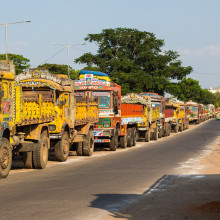
01:08 - India's devastating second COVID wave
India's devastating second COVID wave
Murad Banaji, Middlesex University London
India is in the grip of a devastating second wave of COVID-19. The number of documented new cases is currently exceeding 300,000 people per day, and main hospitals, even in Delhi, are running out of oxygen; and that’s assuming patients can get a bed in a hospital in the first place, because there are none left. The tragedy echoes the on-going situation in Brazil, thought to be fuelled there by the “P1” variant and leading some to speculate that the emergence of an Indian variant might be to blame. Murad Banaji is a Middlesex University mathematician who has been tracking the outbreak from Mumbai. He told Phil Sansom what’s happening...
Murad - Things are very, very bad. It's a devastating situation in many parts of the country. And part of the problem is that because it's all happening so fast, health systems haven't managed to keep up. So many health systems are getting overwhelmed. And even those parts of the country, where perhaps the surge hasn't reached in full force yet, the worry is that it's on its way.
Phil - How has this happened?
Murad - The speed and the size of this wave has taken people aback, including myself. Places, which were previously very badly hit, cities like Mumbai and Delhi are being hit again. And the fact that these places have been hit again, so badly, forces one to wonder whether this is connected, perhaps with the spread of new variants.
Phil - Are people being infected again, who have had it before?
Murad - It's hard not to conclude that people are being infected again. I'm saying this based on seroprevalence studies, which check for antibodies to SARS-CoV-2, and those surveys have indicated that the great majority of people have been infected, 75%, for example, in some of the slums. And yet you're finding high levels of infection happening again. So in a sense, we are really forced to conclude that at least some of that must be reinfection, but we don't know how much. There is some sequencing going on. And I would really like to be able to say, yes, I understand Mumbai's story. I understand Delhi's story because it coincides with the arrival of the following variant, but really we're kind of speculating a lot of the time.
Phil - I wonder how would you compare the situation in India to somewhere like Brazil, which seems to be experiencing kind of a similar looking surge?
Murad - There are many parallels, the most important one being that Brazil appeared to have an improving situation. And then everything got very bad, again, very quickly. There was a story of variants there, obviously. So the lesson should have been, Oh, we need to be keeping a very close eye on what variants might be developing. If in India, people making public health policy had been watching what was going on around the world, including for example, the B.1.1.7. variant taking over in the UK, then people in India would have said we need to be incredibly careful. And one of the things that I think people would have said is that we need to vaccinate as a matter of urgency, because India actually started vaccinating right at the start of the year, but it proceeded very, very slowly. There was not a sense that this is something we need to do as fast as we can. As far as I'm aware, there've been 130 million vaccine doses. That's roughly one dose so far for every 10 people in the country. For me, that reflected the way that policymakers were not tracking what was happening in other parts of the world.
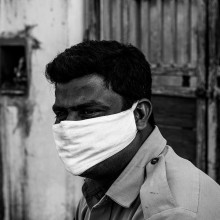
04:43 - Covid-19 Indian Variant B.1.617
Covid-19 Indian Variant B.1.617
Sharon Peacock, Public Health England & University of Cambridge
Here in the UK we are also picking up cases in the community of the Covid variant that is circulating in India and might be behind the surge there. So what do we know about it so far? Surprisingly, it’s not that new, as Cambridge University microbiologist Sharon Peacock, who leads COG-UK, the consortium that’s reading the genetic codes of the cases of coronavirus infection that we pick up here, explains to Chris Smith...
Sharon - This particular variant has been around for some time, actually. If you look in the global database, the first genome dates back to around October 2020, there were very small numbers of genomes being deposited into the database then, and by December, that was beginning to pick up. The first case was detected in the UK back in February. And it's been detected now in more than 20 countries.
Chris - And in terms of when we read the genetic code of this variant, what can that tell us about its likely behaviour or the risk it poses?
Sharon - Well, this particular variant has got 13 different mutations in its genome that result in changes in amino acids. That means it could potentially change the way the virus behaves. It has been called a double mutant in the past. Although I think it's important to avoid that because it doesn't have any particular meaning. But what that is referring to is two mutations in the spike protein, that's the protein that interacts with human cells. The numbers given to these mutations are E484Q and L452R. Now the E484Q is important because changes in that particular position in the genome is associated with immune escape. And the second change, L452R, has also arisen in other variants of interest, or under investigation around the world. So that's what people are focused on now. We don't really know what those two mutations together actually do in terms of the biology. We're just really speculating across from findings, from other variants of interest or concern at the moment.
Chris - Why do you think it's taking off in India the way that it is? Do you think there's something about this particular variant in the same way that the so-called Kent variant caused a takeoff of the outbreak in the UK last autumn?
Sharon - It's very difficult to know at the moment. The question is whether it's associated with the variant as a direct cause and effect, or whether it's more to do with human behaviour, large gatherings, a lack of preventive measures. It could also be down to a change in the virus. We saw a surge for the Kent variant in the UK, and that was down to changes in the virus. It could even be a combination of the two. The change in the genome of the Kent variant that we think has led to the transmissibility is not present in the variant detected in India. So I think really the jury is out.
Chris - How likely is it to be able to out-compete and surge ahead as the leading cause of cases here in the UK, like the Kent variant did last autumn?
Sharon - That's a really important question, but quite a difficult one to answer. At the moment the Kent variant causes 98% of all COVID cases in the UK. And so your question is, could another variant, any variant actually, the South Africa variant or the India variant, really get a foothold, and people are actually looking at that to see if they can estimate relative fitness of one virus against another. I think it's too early to say. The key will be to look at the ability of other variants to transmit between people and spread in the population over time.
Chris - So what do you think are really the big questions that scientists like yourself need the answers to about this variant now?
Sharon - We need to understand: is the virus innately more transmissible than other viruses, or other variants. We need to understand if this variant actually could evade immunity from natural infection or vaccination, the third question would be, does this variant cause a change in disease outcome? Does it cause, particularly, more severe disease?
Chris - What's the best way that we can keep everybody safe, given that we can see these sorts of threats emerging and then spreading in other countries around the world at the moment?
Sharon - Vaccination works, and the way to keep people safe, both in the UK and elsewhere is to vaccinate people. Vaccines are highly effective against the Kent variant and they're likely to provide protection against other variants too. So the key for me is vaccination. The next thing we need to do is really to stress the continued importance of our own behaviour, washing our hands, wearing a face mask, ensuring that we are distanced from each other and undertaking activities outdoors. So the two together are really key in controlling both the variants that we understand, but the variants that are yet to come. Variants don't emerge unless disease is occurring. And so our best hope of controlling variants is to actually control disease as a whole. You know, the Kent variant is changing over time. And so we shouldn't only be focused on the issue of border control and importation, and ignore the possibility that the Kent variant actually may develop other mutations that are actually important biologically, including vaccine escapes. So you have to have a dual focus on what is happening.
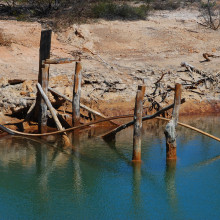
11:07 - Microbes make metallic copper
Microbes make metallic copper
Debora Rodrigues, University of Houston, Texas
65 years: that's how long we've got before one of the most valuable metals in the electrical, electronics and plumbing industries runs out. I'm talking, of course, about copper. But in the course of extracting this precious commodity, which is mined chiefly in the Americas, Africa and China, the environment often pays a very high price. Copper-rich, acidic mine waste in the form of dissolved copper compounds, like copper sulphate, flows into local rivers, lakes and the soil, where it's a potent poison that destroys the local ecology. But Debora Rodrigues, at the University of Houston, Texas, thinks she might have a solution. She went to look at what did live in areas hit by this pollution and was surprised to find flourishing communities of micro-organisms that have evolved to pick up these copper contaminants and turn them back into tiny fragments of harmless copper metal. It's early days, but this might be one way to clean up mine sites, and help to solve our looming copper crisis…
Debora - A lot of the copper mines that we have right now, they have a lot of leaching that comes out of it and they don't use. So we waste a lot of copper and then you generate a lot of contamination and pollution in the area as well. So here actually my back, I don't know if you can see, I have actually a lake that is contaminated with copper, and you see how blue it is.
Chris - Yes. I see. You've got your video up there and your backdrop is a very pretty colour, but not terribly pretty for things to live in, I gather.
Debora - No. And that kills a lot of life, fish, animals, and also it actually creates a huge impact in the environment. So what we are trying to do is actually obtain microorganisms from the environment. They can harvest this copper from the water, from soil, from different environments. And they accumulate inside their cells, and we can actually collect those microbes and take from them.
Chris - When you say they collect the copper, do they collect the dissolved form of copper and turn it back into metal then? Is that what you're saying?
Debora - That's right. That's exactly what I'm saying. They actually get the liquid part that dissolved one, and they transform it into a solid material.
Chris - Before you tell us how you discovered that they exist. Why do the microbes want to do that?
Debora - Well, like all living beings, we always try to make our environment better for survival. They are not different from us. They actually try to harvest the copper and make it into insoluble materials. So it makes it less toxic to them so they can survive in that environment.
Chris - So by being forced to live in a copper-rich, copper contaminated area, the microbes solve the problem by basically turning the copper into something which is less toxic, which is back into the metal form.
Debora - That's right.
Chris - Which, you know, funnily enough, we want.
Debora - Yes, we want that. Exactly.
Chris - How did these microbes come to your attention?
Debora - To be honest, we were not actually looking specifically for them. We were actually trying to understand the diversity of microbes in this environment, but I think that's the fun part of research is that sometimes we're looking for something, and we find something completely different that can be even better.
Chris - Do you know chemically how the microbes are recapturing this dissolved copper and turning it back into the metal in this way?
Debora - Yeah, actually, reducing copper sulfate in the water to produce copper, and they are using proteins. Like we all use proteins for digesting food. They use the proteins to digest the metal and transform it into something else.
Chris - I suppose then, there are two options here, aren't there? Either you could use the microbes as is to clean up wastewater, or you go and steal what it is that they have evolved to have, these proteins that can do this. And you just basically mass produce those and use the proteins, not the bugs.
Debora - Yes. You can certainly do that. You can certainly do that. You can use either the bugs, and extract from the bugs or use their proteins, extract their proteins and mass produce it. So there are two ways that you can do it.
Chris - This is then a first step. The microbes are showing you that it's possible. Now it's a question of in some way, optimising this, either directly by fiddling with the microbes, or fiddling with the proteins that they make to produce a more optimal, more efficient system.
Debora - That's correct.
Chris - Do you think that's going to be feasible?
Debora - I think it will. I think it's feasible considering how our technology is evolving. I think it's going to be totally feasible. Yes.
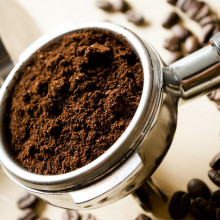
15:59 - Growing hardier coffee plants
Growing hardier coffee plants
Aaron Davis, Royal Botanic Gardens Kew
Whether it’s what you long for in the morning, or you can’t stand the taste, coffee is a global, multi billion dollar sector - coffee farming alone involves over 100 million people worldwide. And despite the fact there are over a hundred species of coffee plants that we know of, only 2 - arabica and robusta - make up the vast majority of what is drunk due to the fact that the others are simply disgusting to most consumers. But, arabica and robusta are sensitive to both temperature and rainfall. And with the changing climate there will be a smaller amount of land suitable for growing these valuable plants. One potential strategy is to find another coffee plant that is more hardy to warmer climates but still delicious, and this week Eva Higginbotham heard from Aaron Davis at the Royal Botanic Gardens at Kew about the rediscovered coffee species Stenophylla that so far ticks all the boxes…
Aaron - We found a coffee that will take much higher temperatures than Arabica coffee, and yet tastes very much like it: Coffea stenophylla, that's the Latin name; or just stenophylla coffee, or sometimes Sierra Leone coffee. It comes from upper West Africa - in Guinea, in Ivory Coast, and Sierra Leone - and it was cultivated in those countries up until the 1920s, and then pretty much disappeared. All the early historic reports tell us that it has an amazing flavour. And one report in particular tells us that it has a better flavour than arabica. So there's a lot of interest in this plant; the trouble is we just didn't have a sample to taste. And what we really wanted to do was find it in the wild, which we did in December 2018. It was sort of rediscovered, as it were, in Sierra Leone; it hadn't been seen there since 1954. Last year we were able to taste that, and were greatly surprised and relieved to find that it did taste excellent.
Eva - How did you go about finding it, if it had been lost for like 70 years?
Aaron - We're working in collaboration with partners in Sierra Leone. So we discussed this with Daniel, our Sierra Leonean partner, and he said, "look, let's make some posters, distribute them to farmers around Sierra Leone, to see if anybody's growing it still." So what Daniel did was to travel around the country on a motorbike, giving these 'wanted' posters out to farmers, and that generated... not a great response! We had two or three responses from that and we went out to those farms, and it wasn't there, it was robusta coffee. Plan B was to try and find it where it was last seen in the wild.
Eva - When you found it, how did you know that it was the same plant as had been written about in the books from before?
Aaron - My speciality is wild coffee species. My job was to actually, once we're in the forest, to identify it amongst all the other plants in the forest. And we're talking about a very dense forest: thousands of plants in front of you, they're all green, typically nothing's in flower or fruit, so we've got nothing to go on apart from leaves. And it was a matter of just looking each leaf to see whether this was the plant we were looking for. And I can't remember whether it was Daniel or Jeremy who said to me, "is this it?" And I said, "no." "Is this it?" "No." And then a little bit later, "is this it?" I said, "yeah, that's it!" I was quite confident, but nobody else was. So what we did was to take a DNA sample from a collection of stenophylla that was sent to Kew in 1873, extract the DNA from that old coffee bean, extract the DNA from the leaf in the forest, to be absolutely sure that this was stenophylla. So we knew we had the right thing, but we had to wait until May 2020 to actually get a small sample for the initial tasting.
Eva - And what does it taste like?
Aaron - Arabica coffee! And at first tasting, the panel leader - who's a very experienced coffee taster - said it actually tastes like a Rwandan arabica, which is a very specific flavour profile. And what we're hoping is that it actually has some different qualities to it that will make it desirable for those coffee connoisseurs who are willing to pay high prices for coffee.
Eva - Do you get tasting notes from it? Like, "this is a vanilla-y flavoured," or, "tastes a bit like wood," or anything?
Aaron - Absolutely! Fruitiness, like elderflower syrup, English candy. All those excite your palette and make the coffee something special.
Eva - What about the coffee bean itself makes it taste different from another species of coffee bean, in terms of the molecular chemistry?
Aaron - That's the key question. We're really still trying to understand the chemical basis of a good cup of coffee. Many others have done a lot of research on the taste of coffee and it's still elusive. There are over a thousand different chemicals involved in coffee flavour - it's not straightforward.
Eva - So what's your hope for this plant going forward?
Aaron - Our hope, initially, is really for countries like Sierra Leone who own the biological heritage of this plant - and for Sierra Leone, it's really part of their cultural heritage as well - so the hope is it's something that can be used to reinvigorate coffee farming in Sierra Leone. I think that's our first aim. And in the long term, because stenophylla has these features - this great taste, ability to withstand hot temperatures, and also the ability to resist some of the most severe diseases for coffee, and we think that it might have some drought tolerance - as a breeding resource it ticks lots of boxes. And for the long term, the hope is that it will be used in breeding work to generate the world's next generation of coffees.
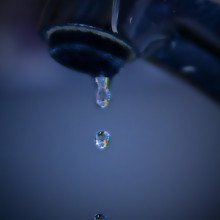
23:11 - Reducing wastewater at home
Reducing wastewater at home
Sarah Ward, West Country Rivers Trust
Let’s fill our metaphorical bucket, dip in our mop and wring out a few home truths about water. We drink it, cook with it, and wash with it. But are we taking enough care of our water? Particularly since some parts of the world are predicted to become much drier through climate change. A recent paper in the journal Science estimates that up to a 5th of groundwater wells are at risk of running dry. So how can we tread a bit more lightly in the way we use water in our homes in future? Chris Smith spoke to Sarah Ward from the West Country Rivers Trust - a charity with the mission to preserve, protect, develop and improve local watercourses. Firstly, Chris asked about the journey water takes to actually get into our taps...
Sarah - We call that the urban water cycle, and it very much starts with taking water from the environment; as you mentioned, that might be groundwater, or that might be surface water from watercourses like rivers. And then that's treated at a water treatment plant, using chemicals and physical processes, which obviously takes energy. And then it's pumped into our houses, using more energy, and through a vast network of pipes and valves and other infrastructure. And that's the part that gets kind of expensive, both in terms of money, energy, and of course carbon emissions. And then it comes out of our taps when we turn them on.
Chris - I suppose it's not automatically intuitive that water would have a carbon footprint, but for the reasons you've outlined, it clearly does!
Sarah - That's right, yeah. So about 11% of the carbon emissions that are generated in the water production process go into the treatment and the transport; and then of course we've got heating of water in homes as well, and that can account for about 89% of the carbon that we use when we're thinking about water.
Chris - So obviously anything that translates into a more efficient use of water, and a more efficient use of hot water - that's going to translate into a carbon saving, isn't it, and that's got to be good news. In terms of what sort of share of the water that the UK uses, how big is the domestic market as a proportion?
Sarah - Approximately 49% of the public water supply goes to what we would call 'domestic use' and commercial uses, and that's household and non-household. And then about 51% goes to agriculture, industry, and energy production. So you can see that that 49% is quite a big amount.
Chris - Yes, indeed. And how efficient are we at using it? In other words, when it all ends up going down the drain, ultimately - admittedly - but when it comes into our home, how much ends up going to the intended source, and how much is wasted?
Sarah - That's a good point. In the UK we have about 20% leakage from that big infrastructure system of pipes and valves and things that I mentioned. That's actually not too bad.
Chris - Out of every five glasses of water, one has gone down the drain rather than down a person's throat?
Sarah - That's it, yeah. So that's lost in that distribution from the treatment plant to the home. So yeah, it depends on area, but if that water travels over a large area between where it's taken out of the river or the groundwater, to where it's then turned on and comes out of your tap, yeah, that that can be quite a big loss.
Chris - But in terms of the overall efficiency, then: so 20% gets wasted, but other things like the thermal uses, the carbon footprint, and so on - are their savings to be made in terms of how we use our water?
Sarah - There are, definitely. Within our home, we use about 25% in the shower, for example; 20-25% in the kitchen; but what we actually flush down the toilet is one that makes the least sense, perhaps, because we flush anywhere between 20-30% - bear in mind, this is drinking quality water - down the toilet. It depends on the type of toilet you've got, and how old it is, and those kinds of things. It's one of those questions that we have to ask ourselves: is it right that we flush drinking quality water down the loo?
Chris - It's sad, isn't it, that in some parts of the world, people are dying because they can't get anything to drink, and we're chucking the stuff down the toilet - quite literally. Is there no better way to do this? Because I often watch the water swirl down the plug hole in the bath or in the shower, and I'm thinking, "actually, I could still drink that. It might have a bit of shampoo in it, but it's a hell of a lot better than what some people are drinking for their daily water. Can't we use that better to, say, water the garden, or chuck that down the toilet, for example? Why do we throw it away?
Sarah - Indeed. It just takes a shift in thinking and behaviour, really. And what you refer to there - the water from your bath or hand basin - that's what we call grey water. And very much so, you can reuse that in the garden; or washing your car if you store it in a water butt, those kind of things; also rainwater harvesting, so that's water that falls on your roof and then it goes down your downpipe, it might go into a water butt, or it might go into a larger rainwater harvesting system. And that can be really good, because what that's doing is it's capturing water where it falls, and then you're using it where it's fallen. So it doesn't have to be transported and pumped, using energy and producing carbon emissions, to your home. And that's a really good way to bring down water use.
Chris - The thing is, Sarah, that when you look at new build houses, they still chuck the shower and the bath water down the drain. There's no policy that says, "and there has to be a water scavenging system in this design that will route that water to somewhere else useful." It's not a building regulation yet, is it? And similarly, we haven't got a system that's easy to implement in your average existing home, so a person who's minded to want to do there bit can easily do it. They've got to put a bucket in the toilet with them, in the shower with them, haven't they, to flush the toilet with, if they want to do that?
Sarah - That's right, yeah. So water reuse is recommended in lots of different building standards and different guidance, and there are some provisions in the building regulations, but they're not as strict or as tied down as they could be. I guess something to bear in mind is that the average amount of water a person uses in a day - what we call 'per capita consumption' - has dropped from about 146-148 litres in 2011-2012 to around 141 litres in 2016-2017. That varies a bit - if you've got a meter, if you haven't got a meter. But what the real aim could be - and this was under some previous green building guidance - was getting it down to around 100 or 80 litres. And that can be achieved by the things that we've been talking about, so grey water or rainwater; but also things that you can do, as simple as turning off the tap when brushing your teeth, and also putting what we call cistern displacement devices in your cisterns. That might be a thing called a hippo, which people can get from their water company, or a brick, which displaces about a kilogram of water. So there are things people can do. But also the kitchen sink tends to be the most energy and carbon consumptive, because that uses generally a lot of hot water, so there's a lot of carbon to be saved by saving water from your kitchen sink and reusing it.
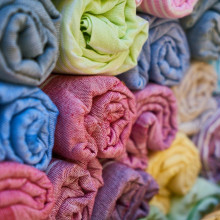
30:38 - Tackling textiles in landfill
Tackling textiles in landfill
Sarah Gray, WRAP
Let’s turn to textiles: the curtains, carpets, and other soft furnishings, as well as the contents of your wardrobe. This is a very thirsty industry too. Every kilogram of cotton we make requires potentially 10s of thousands of litres of water! There’s also a hefty heavy carbon footprint: textiles make more emissions than international flights and maritime shipping. So what can be done to lighten the load? Well, Katie Haylor's been having a clear out...
Katie - I have just pulled most of this old carpet off my stairs. And some rather old lino off the floor in the kitchen. I've shampooed them, scrubbed them, but they are not fit for purpose anymore. And I don't really know what to do with them next. Can they be recycled? Are they destined for landfill? What do I do? Luckily I know an expert, Sarah Gray from the UK-based NGO WRAP - the waste and resources action programme.
Sarah - Best thing I think is probably to try to find somebody else who would be grateful to use it. If it's not usable again, some local councils do provide a collection service. But there are other things you could do, like chopping up the old carpet, for example, and using it perhaps as bedding for animals - maybe at the local animal rescue center. Something I enjoy doing is gardening and I use old carpet as a barrier for the weeds. It doesn't matter if it's synthetic, you can cut holes in it to plant through it. You can move it around when you want to clear another patch of weeds.
Katie - Great idea. I've been meaning to get my veggie bed ready for ages. And it sounds like more than enough textiles are already going to landfill.
Sarah - Households - we're throwing away perhaps about 300,000 tons of clothes every year. And about the same again, a bit more, of household textiles. So things like curtains, bed linen, towels, things like that. As much as 500,000 tons of those were thrown away the last time we counted in one year. Think about it like one ton of those textiles, you'd probably be able to fill a large, maybe a long wheel-based van. So 500,000 of those vans, and that's what we've thrown away in one year. It's a huge amount.
Katie - So what is the carbon footprint impact of diverting would-be landfill items and giving things another lease of life?
Sarah - So the effect of throwing things out - there is an impact associated with landfilling them. A small amount of the carbon footprint is to do with greenhouse gas emissions, especially methane coming from landfills. By reusing textiles of course we avoid that. But the other thing is that we're avoiding having to produce as much in the first place.
Katie - That's what to do with the old stuff. But when it comes to buying new home furnishings, how do you separate the green products from the greenwash?
Sarah - That is a really good question and greenwash has been around for a long time, but I think it's a real concern at the moment. What we really need to be able to do is to get good information on the products we're buying and be able to check that information, to see whether it's true. And that isn't that easy at the moment. One way that you can check is perhaps finding out a bit about the labels that appear on things by doing your own research, perhaps on the internet, to see what those labels mean. What are they actually offering to do by saying that something is "eco" in one way or another? And another is just looking on the company's website that is selling the items and seeing what their sustainability policies are. But at the moment, we're having to do quite a lot of work ourselves to get that kind of information. There's definitely room, I think, for clearer labeling and more information just being available with the product itself.
Katie - One option is to move away from using raw materials in the first place.
Sarah - The more that we can use old textiles and turn them back into textiles again when they're not usable anymore, is kind of the optimum way to recycle because you create a circle that can continue, it can go on and on. So potentially that is a really great way available to us there we avoid having to extract more raw materials, which is where we think the highest environmental impact comes from. If we can just keep things going in that continuous circle, then that really is where we think there's the greatest potential to make a difference in the long term.
It's a real challenge right now, and we need to invest a bit in new technology - sorting the stuff that's put out for collection to be able to separate the different fibre types. And then we need recycling technology to grow. So the amount of textile recycling going on at the moment, especially where that value is maintained in the product, there's hardly any of it! It's really in its infancy. And this is where we're looking to see more innovation and potentially it could get quite exciting over the next few years, as we see industry looking to respond to that challenge.
Katie - So I asked Sarah for her top green tips, if you are going to choose a new item.
Sarah - Do look at the label and look to see what information there is with that product, and be prepared to check it if you don't mind. Look to see what you can find out about the information provided with it. But also the main thing I would really say is choose something that you love, that you'll want to keep. By keeping things in use for longer, by not replacing too frequently, but choosing things that don't wear out and that you carry on loving as well, that's a really good way to have something more sustainable in your home. There is plenty of secondhand stuff available, and there are more ways that we can buy it than there used to be. So you can buy great things at your local charity shop, but you can also find lots of places online that you can buy as well now.

37:31 - Ensuring energy efficient homes
Ensuring energy efficient homes
Tim Forman, Cambridge University
Let’s move next to the buildings themselves and how this impacts home energy usage. Cambridge University’s Tim Forman - who has recently moved house - is an expert on retrofitting buildings to make them more energy efficient, and he spoke with Chris Smith. So first up, how does the new place compare with the old in terms of energy efficiency?
Tim - I'm now in a flat - well-insulated, airtight, draft free. The neighbourhood's nice, but to me, energy efficiency is most important. So the move has gone well, thanks.
Chris - Have you got neighbours above and below and to either side, because of course that's the best way to be energy efficient. I know some students that used to purposely choose flats in that sort of position in houses or in streets so that they couldn't have the heating on all the time. They just relied on their neighbours to do it instead.
Tim - That is absolutely a key benefit to a flat! Far more efficient having fewer external walls. And of course also shared facilities and a reasonable amount of space rather than a far too large an amount of space.
Chris - We're on the subject of housing. And this week, the UK government announced a legally binding target to reduce the CO2 emissions of the UK by an ambitious 78% compared with the levels as they were in 1990. And to do all of that by as soon as 2035. Now that is one of the world's most ambitious global targets for this. But the lion's share of our current household carbon budget is actually eaten up by what we've just been talking about and that's heating. And that potentially means a mass retrofit for the buildings we all live in, which are currently far from efficient, in many cases. And this is something the government are very acutely aware of and they have a plan in place for, they tell us. And that's what business secretary Kwasi Kwarteng told BBC Radio 4's Today programme this week. Let's listen to what he said.
Kwasi Kwarteng - Heat and buildings is a big challenge. I mean decarbonising heat sources, and also, improving energy efficiency of homes is a big challenge. We've got a heat and building strategy, which will be very clear, will be very full of policies, will be very full of directions and that's going to be coming out only in the next couple of months.
Chris - So Tim Forman, how big is the problem facing the UK government? What have they got to drag up hill in terms of what sort of boulder have they got to get to the top of Everest to solve this problem? How bad are our homes?
Tim - I think Everest is a fair metaphor Chris. Frankly it's difficult to overstate. It's a huge challenge. We've got in the UK perhaps Europe's least energy efficient housing. The complexity of the challenge - it's probably not an overstatement to say it's roughly equivalent to the space race in terms of the level of innovation and mobilising across society that's required.
Chris - Indeed there's a report in one of the newspapers this weekend saying that some of the technologies that are going to be needed to solve this problem don't even exist yet. When we say retrofitting though, Tim, what is going to happen to the average home in order to get it up to the standards that we're going to need everyone's home to be at, to meet this very ambitious goal?
Tim - We can think about it if we consider the energy that goes in and the energy that goes out, if you will. So by the energy that goes in, I mean the energy supply, and we're all probably but now familiar with things like solar panels, which are de-carbonising our energy supply. The other side of the issue, and perhaps the more important side of the issue, is the actual energy efficiency. So if we think of the home as a sort of an equation, we have a certain amount of energy that needs to go in to keep it at a comfortable temperature. And a certain amount of that energy is going to be leaking out as waste. What we really need to do is address the waste first, so that we're not attempting to use greener supplies of electricity for buildings which are inherently very inefficient.
Chris - We think that about 80 to 90% of homes are currently plumbed into our UK gas distribution network. The building regulations say that close to 2030, we won't be allowing any new houses to be connected to that network. We'll have to have other sources of heat and energy provision going into those homes. So what does that mean in practice then? What will be heating our homes and heating our water in the future?
Tim - There's a lot of excitement at the moment around hydrogen, as a direct replacement for natural gas heating. I think that certainly has a great deal of potential. Fundamentally, the most important thing is that the energy that is being supplied to a home needs to be green. And we need to dramatically reduce the amount of that energy that's required to keep a home comfortable. So we know we can do that. We just don't know exactly how we can mobilise the financing and the innovation, the technology, and the labour supply and the skilled workforce to do that. Those are the real challenges.
Chris - Do we know how big the price tag is Tim and who's going to pay for it?
Tim - Frankly I don't think we do. We can make lots of estimates. And I think we can make very educated estimates. Until I think we are some way into this, I'm not sure that we can say with real confidence what this will cost. Safe to say that it's a national scale investment. The other side of that though, is that it's a once in a generation opportunity. There's a huge opportunity to make gains through efficiency. So in many ways, this is a very smart investment to make.
Chris - But will it be something we're comfortable living with? As one person pointed out in a letter to the Daily Telegraph this week, they live in a house with a balcony and there's an air source heat pump under that balcony. And when it's running, you can't go on the balcony, you'd be deaf! And if a whole street ran heat pumps like that, then everyone would be deaf. And the neighbourhood would be one noisy neighbourhood. So what sort of looks nice from far is sometimes far from nice.
Tim - I think that's a fair statement. I would say though that an energy efficient home is typically a more comfortable home, certainly. And it's typically a more healthy home. Perhaps the noisy heat condensers aside, I think generally speaking, energy efficiency improvements are all around improvement in homes.
Chris - Do you think we're going to make it, Tim? Do you think that the government is going to be so wide of this target that they're going to make us a laughing stock? Or do you think we're honestly going to get there?
Tim - You've really put me on the spot with that question. I'm an optimist by nature. I have to believe that we can do this. I think we have the technology, roughly speaking, that we need for the moment. I think it's primarily a social problem, a human problem. We've seen, you know, maybe if you'd asked me a year ago, my answer would have been different, but in the last 12 months, we've seen incredible amounts of mobilising across the scientific community, across society. And that's exactly what we need in housing. And perhaps if we've learned one thing in the last year, we know that real radical change is possible and that's what we need.
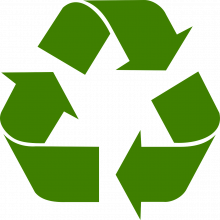
43:47 - Making greener choices
Making greener choices
Jo Hale, UCL
So far we’ve discussed greener alternatives to the ways we use water, textiles, and energy in the home. And to reflect on these aspects is behaviour change psychologist Jo Hale from UCL, who spoke to Katie Haylor...
Jo - I think it can be helpful to think about capability, opportunity and motivation factors. So these are the three conditions needed for any kind of behaviour change, including making green actions. So capability refers to knowledge and skills and physical abilities. Opportunity is more about our resources. So the time and money at our disposal, and our physical surroundings and our social environment as well. And then motivation involves, on the one hand, our attitudes, beliefs, and values, so quite reflective aspects; and also our emotions and routines and habits, which are more automatic drivers of behaviour. And these three factors aren't completely separate, they interact. So for example, having greater capability and more opportunity could lead to more motivation to make a change.
Katie - So could you apply this modelling to maybe a few of the things that we've been talking about, like water or avoiding textiles ending up in landfill, or energy use?
Jo - Yeah, sure. So for each of those three areas, we can think about what barriers might there be in terms of people's capability, opportunity, or motivation, and then how to remove those barriers. So just to take some examples for using water more wisely, we might find that actually our old habits and routines around using the shower and the sink and the washing machine tend to override things. And that's a motivation factor. And to maybe overcome that you could do something like putting a prompt in your environment, so maybe use a timer in the shower. I have a little sun timer provided by Thames water. Or you could do something like put a sticker on the washing machine, to remind you not to use some of the settings. For things to do with textiles, we know that an opportunity barrier is that people feel they don't really have the time to make repairs and alterations, even if they have the skills to do so. So maybe to overcome that providing a service that could do the repairs and alterations for you would help. And around energy efficiency, we know that people have a capability barrier in that they find the options really confusing, it's hard to just know what to do and what your home needs. So in those cases, something like an advice portal could be really helpful or even having a new role for someone like a "retrofit designer" who could be a person that would provide tailored advice to you and your household.
Katie - It is interesting and relevant, I think, that you mentioned cost because, you know, some of these changes don't cost any money and some of them can be very expensive.
Jo - Yeah, absolutely. I think it's really important that we recognise that different people face different barriers to making green choices and cost is a really major factor; particularly in some of the bigger carbon emissions saving things that we want people to do, like making major alterations to their homes. So it's really important that that's taken into account so that all changes are affordable and accessible to everyone.
Katie - In terms of policy, do we know what works in terms of encouraging people to make greener choices where that is possible?
Jo - Well, we know what doesn't work, which is just telling people what to do and why it's important. That's usually not enough because it addresses people's knowledge, that's sort of capability, but maybe not so much opportunity or motivation. So policies are most likely to work when they first look at what's preventing people from making green choices and then match up a suitable intervention. So for example, the carrier bag charge was really effective because it's removed the things that were probably prompting people to use plastic bags in supermarkets, which was just being offered it as a default option and it being free so really convenient. But there won't really be a one size fits all policy for achieving big targets like net zero, because like I said, people face different barriers to making green choices and so different types of solutions are needed. And it's really important that policies don't exacerbate the existing inequalities that already exist to disadvantage some people in the UK.
Katie - As you say, you know, we are all individuals and our living situations are unique. So how can we figure out what changes are most likely to make a difference in our own situation?
Jo - Yeah, so it can be really confusing, but luckily there are loads of tools and apps and websites now, which can help to understand where the biggest carbon savings can be made and what you personally can do. So one good one that I like is the Grantham Institute's list of nine things you can do about climate change. And some of the biggest impact actions are things like eating less meat and dairy, flying and using the car less, and of course, saving energy and water home. But I would say as well, once you've had a look at what to do, make an intention to do something about it. So put it in your diary or on your to-do list because forming a clear intention will help you to carry through on that action. And just as importantly as these individual actions, talk about what you're doing and don't be afraid to ask for help, because all of that helps to push this higher up on the agenda.

QotW: how do zip files work?
Phil - Those are files that end in the letters .zip, and to do anything with them, you have to first click a button that says ‘extract’ - and somehow, out come a new set of files! What on Earth is going on? Here’s how research data scientist Peter Foster sees it...
Peter - A ZIP file is a convenient way to bundle up one or more files, with the seemingly magical property that its contents are shrunk in size, but no information is lost. In this sense, ZIP files are all about data compression.
Phil - Without lovely compression we could be drowning in data. Watching an uncompressed, high-definition video could easily burn through your whole monthly mobile data plan in a single second - but thanks to compression, watching youtube on your phone still leaves gigabytes to spare. And this isn’t just for computers.
Peter - We all use our own kind of data compression when we use textspeak (e.g. acronyms and abbreviations), to shorten our messages. This works if the recipient knows the meaning behind the textspeak! If you wanted to be 100% certain the person you’re texting can decode your texts, you’d send them all the textspeak definitions you’re using in advance through a carefully chosen dictionary.
Phil - This kind of dictionary would tell you that “l o l” is code for “laughing out loud”, for example, but it could also use custom abbreviations for phrases that appear a lot in your specific message. And with the right abbreviations, the overall ‘coded’ message - plus dictionary - could be much, much shorter.
Peter - In a similar way, ZIP files are encoded versions of the files that they contain, interspersed with dictionary entries, which together allow us to decode the files. The abbreviations can represent sequences of data of any length - for example, strings of characters.
Phil - In other words, compression is all about finding - and exploiting - patterns in data. No patterns - no compression.
Peter - If you tried to zip up a file which contained only randomly-generated data, you would need to be extremely lucky to see any shrinkage in the zipped version.
Phil - And so we have today’s ZIP files.
Peter - By the way, the ZIP file is an example of lossless data compression (simply meaning without loss of information), but it is worth mentioning that there are other types of compression, which are lossy, like JPEG for images or MP3 for audio.
Phil - And that last one is probably how you’re hearing me now! Thanks very much to Peter Foster, from the Alan Turing Institute. Next time we’re answering this question - and don’t let it ‘bug’ you - from listener Jeffrey…
Jeffrey - We’ve had a cold and snowy winter, and I’ve had to shovel my driveway every few days. We had a fly in our house, and I was curious if it survived the cold somehow, or recently hatched?










Comments
Add a comment